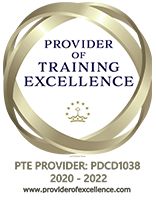Have you ever been walking out in nature and come across an injured bird with a broken wing? You’re naturally going to want to help that animal, but it’s important that you exercise caution, as you don’t want to cause more harm than good. Understanding the right way to treat an injured bird can save its life and it’s something we cover here.
As you’ll learn in our Animal Welfare ourse, you must balance your good intentions with proper knowledge and care. So, come with us now as we show you how to treat an injured bird for the best possible outcome.
Assessing the Bird’s Need For First Aid
First things first - handling a baby bird won’t cause its mother to abandon it, so handling nestlings is fine. You need to assess whether you’re dealing with injured wildlife or not as a matter of priority. A simple close-up look should tell you everything you need to know.
Young birds often fall from their nests, but that doesn’t mean they’ve hurt themselves in the process. However, it should be pretty obvious if the bird needs help. When you’ve decided that it does require assistance, what you do next needs to be just right in order to prevent further injury.
Gentle & Safe Handling Techniques
An important aspect when learning how to treat an injured bird from the wild is handling. Even when dealing with small birds, it can be tricky, and wild birds can get very stressed - to the point where it can even be fatal. That’s why you need to assess whether capturing the bird is going to be easy enough not to traumatise it.
Obviously, when talking about large birds, such as a bird of prey, our instructions on how to treat an injured bird might not apply. For instance, if you find an injured wedge-tailed eagle, a brown falcon, or similar bird species, you should probably call a licensed wildlife rehabilitator or the RSPCA for assistance.
Leg & Wing Injuries Are Most Common
While you could be dealing with open wounds or other serious injury problems, by far, the most common avian injuries relate to broken wings and legs. As taught in our Animal First Aid course, in this kind of situation, you should be looking to safely transport the animal to a safe place in a suitable container like a cardboard box.
The injured animal needs to be able to breathe, so it’s important that it’s a well-ventilated box, but ideally, the quiet, warmth, and darkness it provides should help to calm it down.
Seeking Professional Guidance
Once you’ve taken the injured wild bird home, it’s time to take stock and reassess. This means calling your local animal rescue centre - even if it’s just to check you’re doing the right things for the sick bird. During this call, they may ask for you to bring it in for examination or simply give some advice to the rescuer about the next steps.
Something often recommended by local wildlife rehabilitator experts is to add a heat source to the box, as it helps with the shock. This can be achieved by wrapping a hot water bottle or a heating pad if you have one, and if there are any droppings, be sure to regularly clean them out.
It takes around 3-4 weeks of specialist care for a bird’s wing to heal. If no break has occurred, you will probably find that the bird recovers after a few hours and simply wants to fly home. When a break has occurred, however, specialist help is pretty much always needed.
Broken Wings & Legs Require Specialist Attention
As you learn when taking our Animal Health & Veterinary Care course, when wild animals like these suffer from broken wings and other limbs, an expert hand is needed. The vast majority of even the best-intentioned people don’t know how to treat an injured bird like this properly.
The great thing is, however, if you want to improve your knowledge on the matter or join the animal care industry, training options like our Vet Nursing Sampler offers a great way to start learning to become a pro.
Delivered entirely online, all of our industry-led courses are both mentally stimulating and engaging while also being cost-effective and easy to fit around life’s many obligations.
Learn How to Treat an Injured Bird & More With OCA Short Courses
Anyone wanting to learn how to treat an injured bird or learn how to better care for animals get to learn at their own pace with OCA online training. It’s CPD-endorsed and modular for easy digestion, so there really is no easier or more affordable way to train for the industry.
To get a closer look at the next-level experience we offer, watch our Student Study Demo or simply visit www.onlinecoursesaustralia.edu.au, where you’ll see that our training covers more than 20 different industries. Alternatively, to speak to us directly about your learning needs, call 1300 611 404 or email [email protected], and we’ll be happy to help.






















